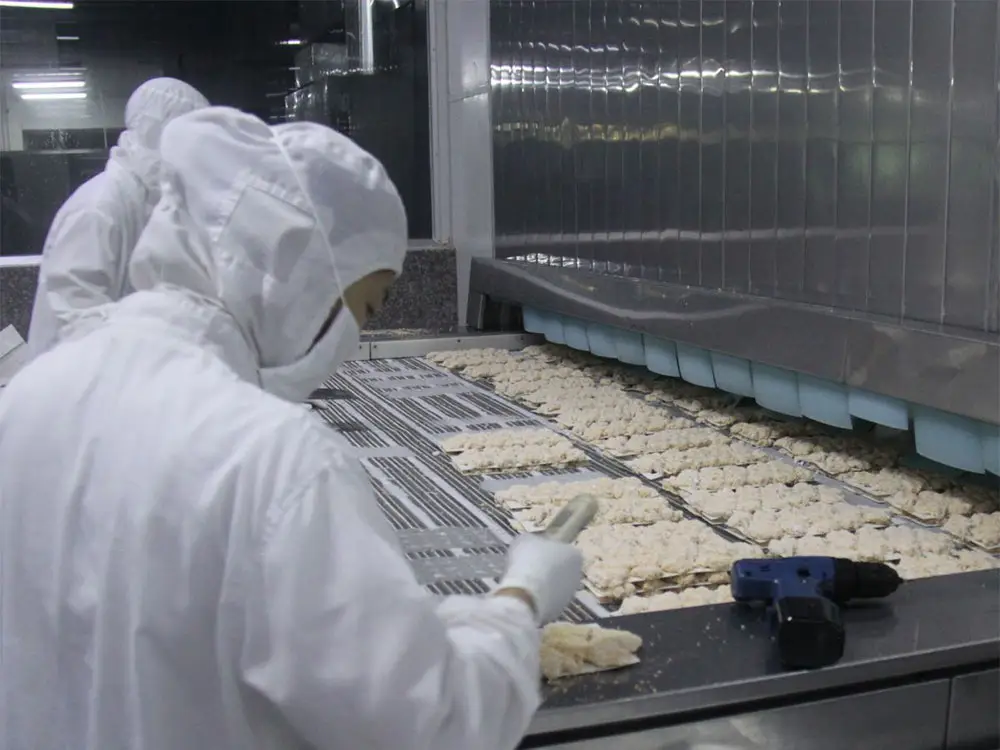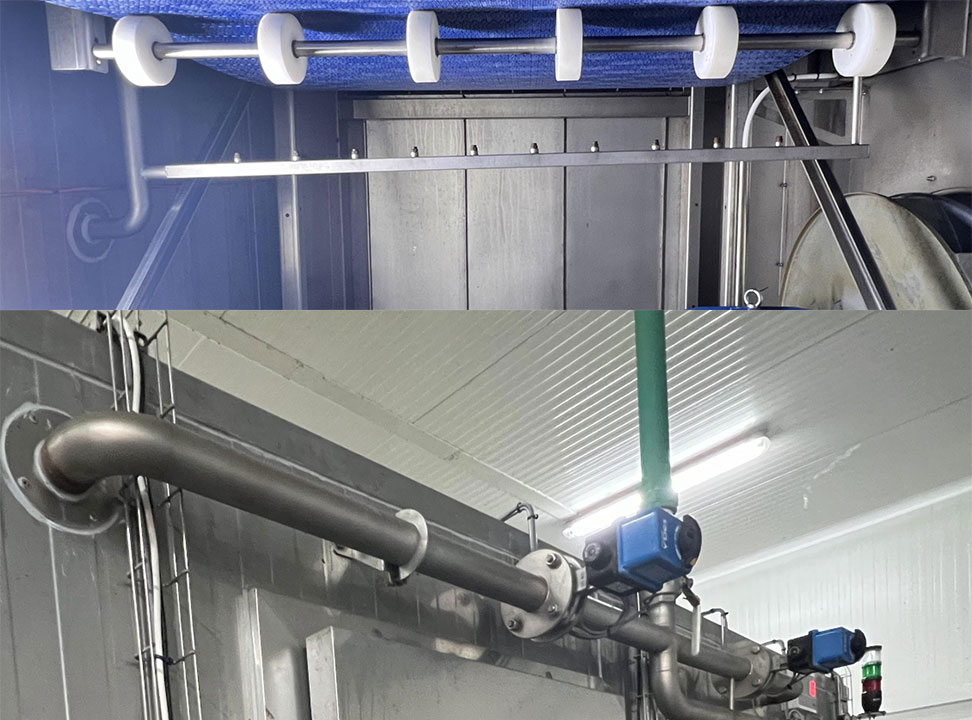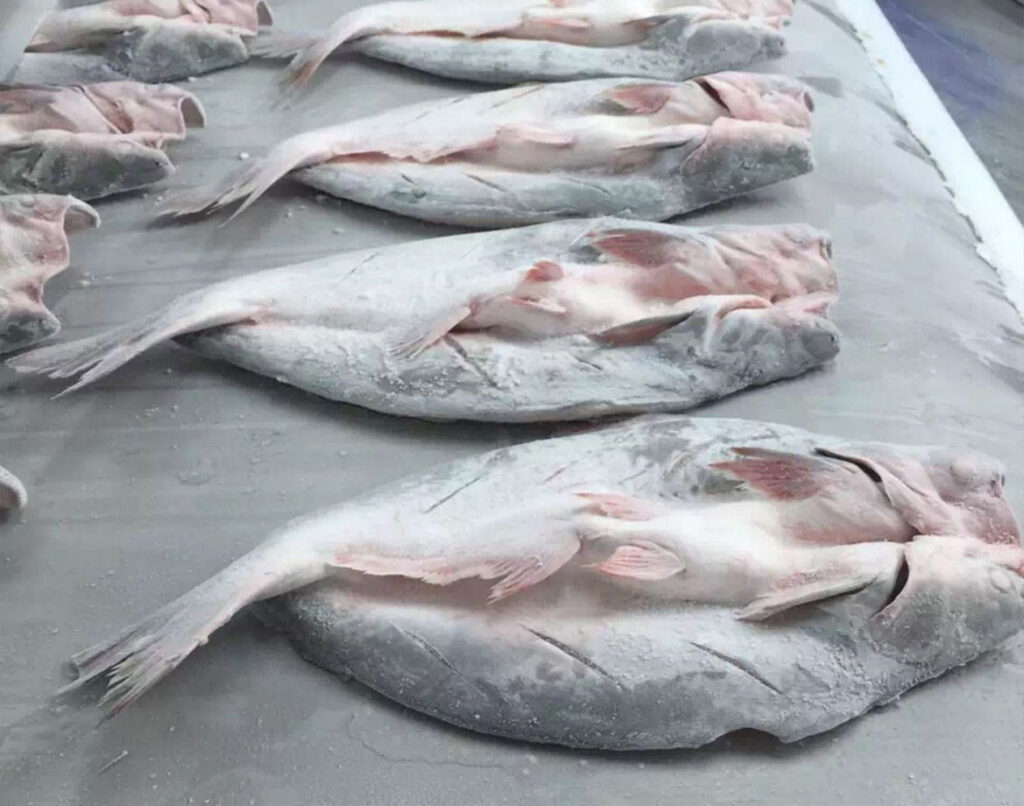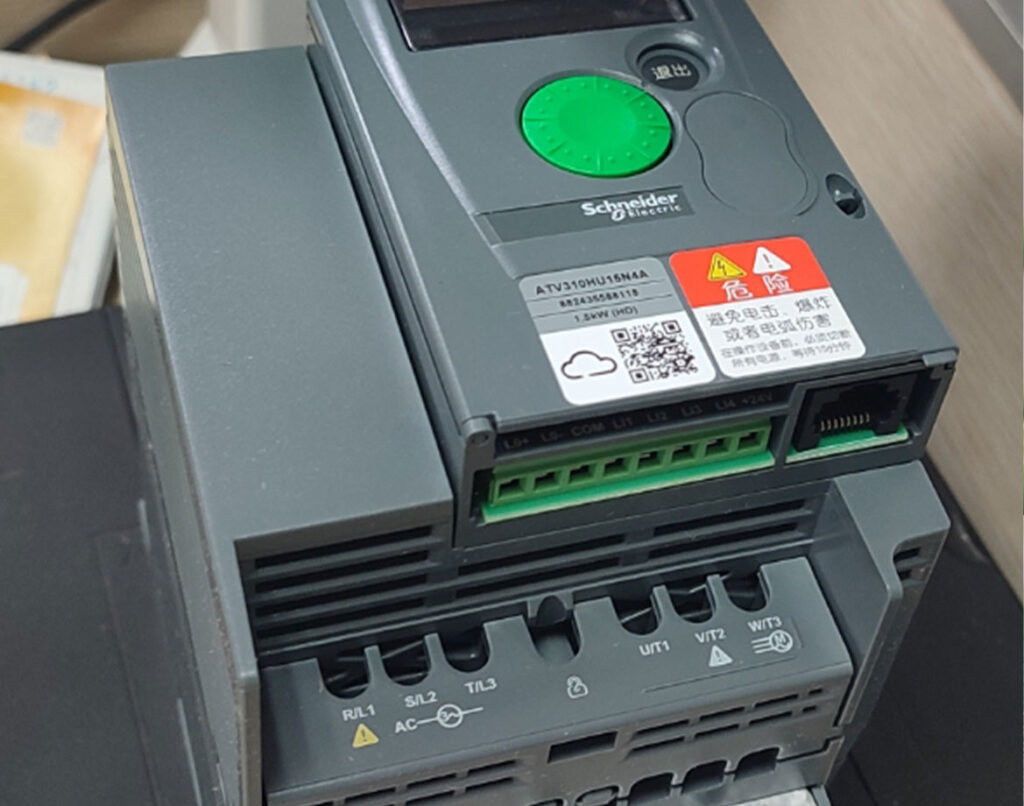
A Tunnel freezer is a highly efficient quick-freezing device with a relatively simple structure. According to the different conveyor belts, it can be divided into tunnel mesh belt quick freezer and tunnel plate belt quick freezer.
Capacity:
200kg/h~1000kg/h
Application Area:
Quick freezing processing of seafood, poultry, vegetables, fruits, pastas, dairy products, etc.
| Model | Freezing capacity | Inlet/Outlet Temp. | Temp. in cabinet | Freezing time | Refrigerant | Overall dimension |
|---|---|---|---|---|---|---|
| ITF-200 | 200kg/h | +10℃/-18℃ | -35℃ | Continuous and adjustable | R717/R22/R404a | 3120×4400×3050 |
| ITF-500 | 500kg/h | 6000×4400×3050 | ||||
| ITF-750 | 750kg/h | 8800×4400×3050 | ||||
| ITF-1000 | 1000kg/h | 11760×4400×3050 |
Note:
1. The freezing capacity refers to the dumpling. Refrigeration capacity is based on condensing temperature of +35℃ and evaporating temperature of -42℃.
2. The standard models listed above are for your reference. It will be designed as per specific requests.
| Model | Freezing capacity | Inlet/Outlet Temp. | Temp. in cabinet | Freezing time | Refrigerant | Overall dimension |
|---|---|---|---|---|---|---|
| BITF-500 | 500kg/h | +10℃/-18℃ | -35℃ | Continuous and adjustable | R717/R22/R404a | 10240×3420×3000 |
| BITF-750 | 750kg/h | 14950×3420×3000 | ||||
| BITF-1000 | 1000kg/h | 19660×3420×3000 |
Note:
1. The freezing capacity refers to scallops. Refrigeration capacity is based on condensing temperature of +35℃ and evaporating temperature of -42℃.
2. The standard models listed above are for your reference. It will be designed as per specific requests.
| Model | Freezing capacity | Inlet/Outlet Temp. | Temp. in cabinet | Freezing time | Refrigerant | Overall dimension |
|---|---|---|---|---|---|---|
| ITF-200 | 200kg/h | +10℃/-18℃ | -35℃ | Continuous and adjustable | R717/R22/R404a | 3120×4400×3050 |
| ITF-500 | 500kg/h | 6000×4400×3050 | ||||
| ITF-750 | 750kg/h | 8800×4400×3050 | ||||
| ITF-1000 | 1000kg/h | 11760×4400×3050 |
Note:
1. The freezing capacity refers to the dumpling. Refrigeration capacity is based on condensing temperature of +35℃ and evaporating temperature of -42℃.
2. The standard models listed above are for your reference. It will be designed as per specific requests.
| Model | Freezing capacity | Inlet/Outlet Temp. | Temp. in cabinet | Freezing time | Refrigerant | Overall dimension |
|---|---|---|---|---|---|---|
| BITF-500 | 500kg/h | +10℃/-18℃ | -35℃ | Continuous and adjustable | R717/R22/R404a | 10240×3420×3000 |
| BITF-750 | 750kg/h | 14950×3420×3000 | ||||
| BITF-1000 | 1000kg/h | 19660×3420×3000 |
Note:
1. The freezing capacity refers to scallops. Refrigeration capacity is based on condensing temperature of +35℃ and evaporating temperature of -42℃.
2. The standard models listed above are for your reference. It will be designed as per specific requests.









The main difference between a mesh belt tunnel freezer and a board belt tunnel freezer lies in their conveyor belt design and their suitability for different types of products.
Mesh belt tunnel freezer: Uses a belt made of metal mesh, which allows cold air to flow freely around and through the product. This design is particularly effective for freezing small items or irregularly shaped products like vegetables, seafood, and meat cuts. The open structure of the mesh belt ensures even and efficient freezing, making it ideal for IQF (Individual Quick Freezing) applications.
Board belt tunnel freezer: Utilizes a solid, flat conveyor belt, often made of stainless steel or plastic. This design provides a stable surface, making it suitable for larger or more delicate items, such as whole fish, meat blocks, or pastry products. The solid belt helps to maintain the shape and structure of these products during freezing.
Both types of tunnel freezers are effective, but the choice depends on the product type and specific freezing requirements.
A blast freezer tunnel is typically maintained at temperatures ranging from -30°C to -40°C (-22°F to -40°F). This extremely low temperature allows for the rapid freezing of products, locking in moisture and preserving quality by minimizing ice crystal formation. The temperature setting can be adjusted depending on the type of product being frozen and the desired freezing time. The goal is to quickly bring the product’s core temperature down to -18°C (0°F) or lower, which ensures longer shelf life and maintains the texture and nutritional content of the frozen product.
The term “high tunnel” generally refers to a type of greenhouse structure used in agriculture, but in the context of freezing, it can be interpreted as investing in high-capacity tunnel freezers. A high-capacity or large-scale tunnel freezer can be worth the investment if your operation requires large-volume, continuous freezing. These freezers are designed for high efficiency, maintaining consistent low temperatures and allowing for faster processing times, which is especially important in industries like seafood, meat processing, and ready-made meals. The benefits of a high-capacity tunnel freezer include increased productivity, reduced labor costs, and better energy efficiency over time. For businesses that require a consistent, high-quality freezing process, the investment can offer substantial returns by improving product quality and meeting higher production demands.
Global Office (Sales Consulting)
Email: [email protected]
Manufacturing Plant and Warehouse
Whatsapp: +86 18115309498
Global Office (Sales Consulting)
Email: [email protected]
Manufacturing Plant and Warehouse
Whatsapp: +86 18115309498
We look forward to hearing from you!